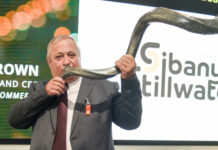
M ining is critical to South Africa’s economy. In the first three quarters of 2024, the sector contributed an added value of about R448.4bn (6.8%) in nominal terms to the country’s gross domestic product (GDP), underscoring its importance to the economy.
Mining’s historic significance as the main cog in South Africa’s industrialisation cannot be overstated – the more reason Government has placed the industry at the core of its efforts to transform the local economy. Over the years, the sector has undergone significant changes, moving away from being an isolated sector to becoming integrated into the wider economy, making it more imperative to transform the sector.
And try as some might to disagree, it is irrefutable that South Africa’s mining sector has vastly transformed over the first 30 years of the new democratic dispensation. The growing number of black-owned and managed mining companies – some of which are listed on the JSE resources counters, including other foreign-based stock markets – is a mirror reflection of efforts to transform this sector.
While considerable progress has been achieved in this regard, how can South Africa ensure that previously marginalised individuals and mining communities gain a foothold?
South Africa is endowed with a vast array of minerals including, gold, zinc, platinum, copper, manganese. But there are many other minerals that could potentially be extracted if the industry could enhance exploration activity. Eliminating barriers to entry such as prohibitive exploration costs is a critical step in achieving inclusive transformation.
Junior miners have consistently struggled to raise exploration capital. This challenge is telling in the country’s low uptake in minerals exploration. According to the Minerals Council of South Africa, exploration has fallen from 5% of global expenditure, to less than 1%, with the greatest decline recorded between 2020 to 2022.
Junior mining exploration fund launched
Enter the Junior Mining Exploration Fund (JMEF), a joint mining exploration fund established by the Industrial Development Corporation (IDC), the Department of Mineral and Petroleum Resources (DMPR), and the Council for Geoscience (CGS). Through it, eligible junior mining companies have been thrown a financial lifeline.
Launched in 2024, the objective of the R400m fund is to enable South African junior mining businesses to access funding so they can conduct prospecting work, increase access to mine ore bodies, and promote economic inclusion that will support equitable economic growth. The fund is administered and managed by the IDC. As part of the terms for funding, successful applicants receive non-repayable, convertible grants.
Funds disbursed to recipients are convertible to equity or profit share upon successful discovery of an orebody. Other qualifying criteria requires applicants to comply with the South African mining regulatory requirements, including but not limited, to the provisions of the Mineral and Petroleum Resources Development Act (MPRDA), the National Environmental Management Act (NEMA), and the National Water Act.
Critical among other requirements, and as prescribed by the provisions and requirements of the Mining Charter, interested companies must have at least a 51% black shareholding in the business and this equity should meet the equity merit as defined in the B-BBEE Act.
Implats of fund on junior miners
The IDC has, and continues to play, a critical role in transforming the local mining sector. Although not a panacea to the funding challenges, the overwhelming response in applications received so far supports the importance of the exploration fund.
While we aren’t anywhere close to resolving funding constraints facing junior miners in general, we are confident that this intervention will galvanise the private sector and other stakeholders to support exploration.
Without a doubt, a vibrant mining sector will go a long way towards bolstering the development of South Africa’s economy which is critical to creation of employment.
Against the backdrop of teething challenges, the uptake in applications is remarkable. Of significance to the IDC is that there is a very good regional spread and target of minerals.
During its first application window, the JMEF received a total of 114 applications. Due to its relatively small size, eight applications accounting for 41.2% of the value of the fund have since been approved in copper, nickel, graphite, lithium and rare earth elements.
From the review of the first call it was clear that some applications could not make it through the assessment process due to:
• Failure to meet the BEE prescript of 51%;
• Invalid prospecting rights or no prospecting rights at all;
• Failure to focus on the targeted minerals;
• Falling outside South Africa.
As we prepare to open the next application window, our advice to applicants is that they factor in the chances of finding the minerals in the prospective areas. Although still in infancy, our view is that the JMEF will contribute to transformation of local mining in the long-term.
Yose is the Acting Divisional Executive for Mining, Metals and Energy at the Industrial Development Corporation.











